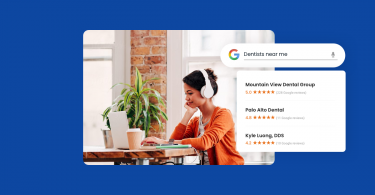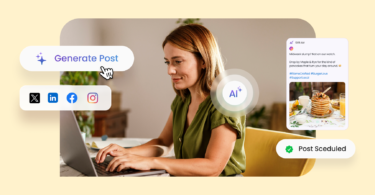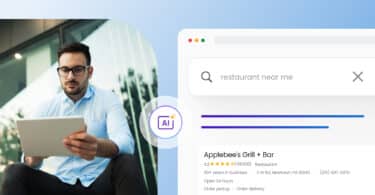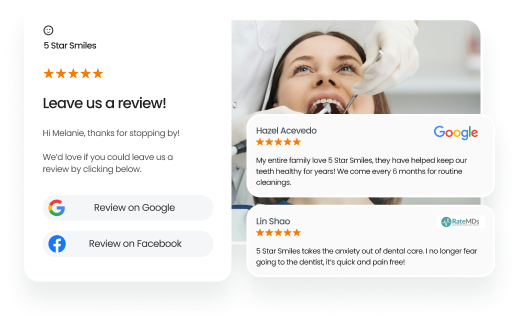SEO for personal injury lawyer practices has become the cornerstone of modern legal marketing. In a digital-first world, relying solely on referrals, print ads, or billboards is no longer enough to sustain or scale your legal practice.
Today’s potential clients are making decisions with a few taps on their phones, and if your law firm doesn’t appear on the first page of Google, you’re simply not part of the conversation.
For personal injury clients, the decision to contact you hinges on trust and visibility. Ranking high in search engine results directly impacts caseload and revenue. An effective SEO strategy makes your firm discoverable when someone needs help the most.
And the best part? It’s sustainable. Unlike paid ads, which stop the moment your budget runs dry, SEO builds long-term digital equity. A strong SEO foundation drives organic traffic day after day, helping you connect with more potential clients at a lower acquisition cost.
In this blog, we will explore everything you need to know about building a successful SEO strategy for your personal injury law firm.
From optimizing your website and mastering local search to creating content that converts and generates reviews that influence decisions, this blog will give you the edge you need to rank higher, earn trust, and grow your practice.
Table of contents
- Why SEO is essential for personal injury lawyers
- SEM vs. SEO for personal injury lawyers: What’s the difference and why it matters
- Optimizing your law firm’s website for SEO: Turn your site into your highest-converting asset
- Local SEO strategies to dominate your target market
- Essential local SEO strategies to boost visibility and attract high-intent clients
- Building high-quality backlinks for personal injury lawyers: Earn authority, boost rankings, and win trust
- Effective content marketing strategies for personal injury lawyers: Educate, engage, and earn trust
- Review management: A hidden SEO powerhouse
- Tracking and measuring your SEO efforts: Turn data into direction
- Should you manage SEO in-house or hire an agency?
- FAQs: SEO for personal injury lawyer
- Final thoughts: Time to dominate page one of Google
Why SEO is essential for personal injury lawyers
The legal industry, particularly personal injury law, is fiercely competitive. Every day, countless firms battle for visibility, yet only a few appear at the top of search engine results pages (SERPs). In this high-stakes environment, visibility is beyond beneficial; it’s a business imperative.
Clients searching for a car accident lawyer, slip and fall attorney, or legal help for workplace injuries are often in crisis mode. They need legal assistance fast, and their first instinct is to search online. These individuals are ready to act rather than just browse. If your law firm doesn’t rank prominently in search results, you’re missing out on qualified leads who are actively looking for help.
As highlighted in the Birdeye Online Reviews Report 2023, a staggering 68% of people check online reviews before choosing a business, including law firms. This underscores how digital visibility, credibility, and trust go hand-in-hand.
Ranking well in search engines is about building authority at every digital touchpoint, from Google Business Profile listings to social media platforms and third-party legal directories.
Why is this so urgent for personal injury law firms? Pay-per-click (PPC) advertising is notoriously expensive in this vertical. Personal injury is one of the costliest categories in paid search, making sustainable organic traffic through SEO a more cost-effective and scalable alternative. Rather than pouring endless budgets into ads, you can invest in content, on-page optimization, and online reputation management that build momentum over time.
A strong digital marketing strategy centered on SEO for personal injury lawyer practices delivers long-term value by:
- Driving consistent organic traffic to your website.
- Improving visibility in local searches, helping you attract local clients in your service areas.
- Enhancing your Google Business Profile so you stand out on Google Maps and mobile searches.
- Increasing your keyword rankings for high-intent terms like “car accident lawyer near me” or “injury attorney consultation”.
- Reducing reliance on ads while lowering client acquisition costs over time.
- Positioning your firm as a top result despite high keyword difficulty in competitive legal markets.
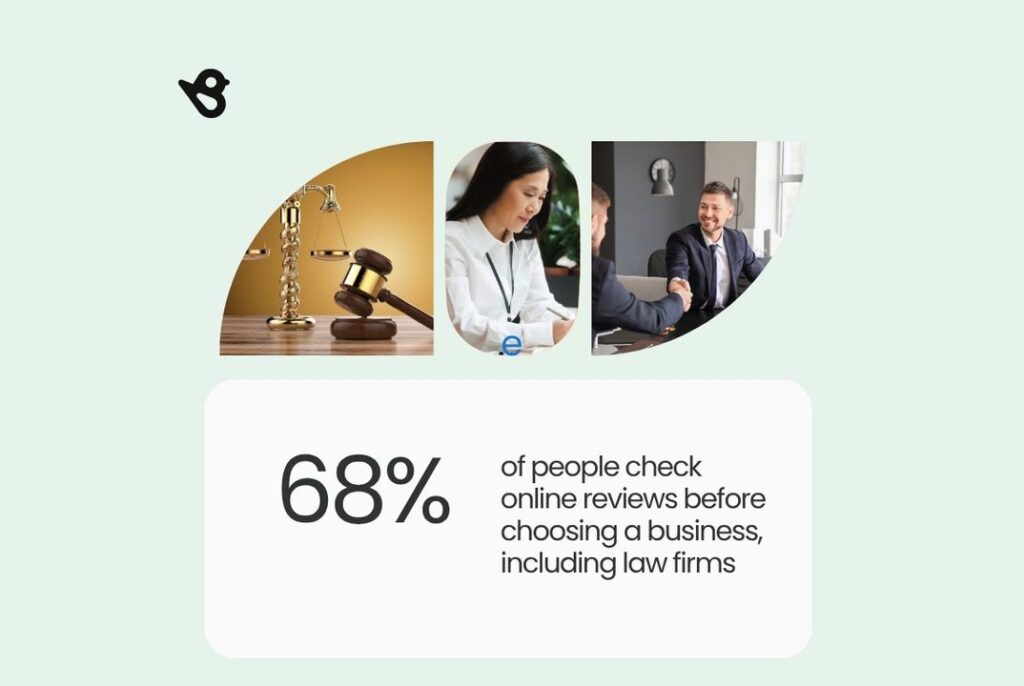
More than ever, ranking high means being trusted. Personal injury lawyer SEO connects your firm with people who are searching not someday but now.
If your competitors are showing up in top results and you’re not, your prospective clients will choose them over you, whether or not they’re the better fit.
Therefore, when done right, SEO becomes your best lead generator, your strongest advocate online, and the most reliable way to grow in today’s search-first legal landscape.
And as Kimberly York, Legal Case Manager, Disparti Law Group, P.A, puts it:
“Birdeye is the best and most convenient way for me to stay in contact with my clients on our legal cases. A lot of clients are older and are unable to easily send emails or come into the corporate locations to deliver us important, case-changing documentation. Birdeye allows easy access to transferring and corresponding documents and questions.”
SEM vs. SEO for personal injury lawyers: What’s the difference and why it matters
When it comes to attracting personal injury clients, two core legal marketing strategies dominate the digital landscape: SEO (Search Engine Optimization) and SEM (Search Engine Marketing). While both aim to improve visibility in Google search, they differ significantly in execution, investment, and long-term impact.
For personal injury law firms competing in saturated markets, understanding the nuances of each approach is key to driving meaningful traffic and maximizing ROI.
Here’s a breakdown of how these strategies compare and how to use both effectively:
1. Shared goal, different timelines: Visibility and traffic
Both SEO and SEM are designed to improve your position in search results, but they operate on different timelines.
- SEO for personal injury practices focuses on building long-term visibility through high-quality content, link building, on-site optimization, and technical fixes. The payoff is steady and scalable: once you gain traction, organic traffic compounds without ongoing ad spend.
- SEM, on the other hand, uses paid tools like Google Ads to appear instantly at the top of the page. While it offers fast visibility, it requires continuous budget allocation. The moment you stop paying, the traffic stops, too.
SEO lays the foundation for sustainable growth. For time-sensitive campaigns or specific case types, SEM can deliver a short-term boost.
2. Keyword research drives both strategies
Targeting the right search terms is essential in both SEO and SEM campaigns, but the stakes are higher when every click counts.
- Use platforms like Google Keyword Planner, SEMrush, or Ahrefs to identify personal injury SEO keywords with high intent and manageable keyword difficulty.
- Target both short-tail keywords (e.g., “injury lawyer”) and long-tail phrases (e.g., “car accident attorney in Austin, TX”) that signal stronger intent and are more likely to convert.
- Your personal injury website should be optimized for terms that match what your audience is already searching for, improving both paid and organic traffic performance.
Whether you’re running paid ads or building SEO content, keyword precision ensures you’re attracting personal injury clients actively looking for help.
3. SEO builds equity, SEM amplifies urgency
Think of SEO for personal injury lawyers as a long-term investment and SEM as a short-term accelerator.
- SEO builds brand equity online by growing your reputation, improving search results rankings, and boosting credibility through link-building and content authority.
- SEM is ideal for urgent, high-value campaigns like promoting a new office location, launching a time-limited offer, or testing new legal marketing messages.
- Together, they complement each other: use SEO to dominate local queries over time and SEM to highlight high-priority practice areas when speed is essential.
A successful strategy often blends SEO to establish your firm’s digital foundation and SEM to amplify your visibility when and where it matters most.
SEM vs. SEO for Personal Injury Lawyers: A Side-by-Side Comparison
| Feature | SEO for Personal Injury Lawyer | SEM (Search Engine Marketing) |
| Primary Goal | Long-term visibility and organic traffic | Immediate visibility in search results |
| Cost | Upfront investment, no ongoing spend per click | Ongoing cost per click; stops when ad budget ends |
| Timeline | Takes 3–6 months to gain traction | Delivers results almost instantly |
| Traffic Type | Sustained and compounding over time | Temporary and campaign-based |
| Content Needs | Requires high-quality content, blogs, and service pages | Minimal content; ad copy and landing pages |
| Keyword Strategy | Balanced short-tail and long-tail keywords; optimized for search | Focused on competitive keywords; bid-based targeting |
| Trust and Authority | Builds authority through link building and reviews | Builds brand awareness; less focus on authority |
| Best Use Case | Builds brand equity, increases keyword rankings, and attracts personal injury clients organically | Promoting urgent campaigns or new services |
| ROI Over Time | Improves with time and effort | Drops when spending is paused |
| Integration Potential | Works well with legal marketing tools like Birdeye | Can supplement SEO, especially for high-value cases |
Optimizing your law firm’s website for SEO: Turn your site into your highest-converting asset
Whether prospective clients are arriving from search engine marketing, social media, or local listings, your website needs to engage, inform, and convert in seconds. A strong attorney SEO foundation ensures your site turns visitors into signed cases.
Here’s how to optimize every inch of your site for better performance and higher visibility:
1. Prioritize above-the-fold content
The top portion of your homepage (visible without scrolling) must make an immediate impact. This section should clearly communicate the following:
- The types of legal services you specialize in (e.g., personal injury, car accidents, slip and fall)
- Clear and easy-to-find contact information
- A bold, actionable CTA like “Schedule Your Free Case Evaluation” or “Get Legal Help Now”
This not only improves user experience but also contributes to higher engagement rates and, ultimately, better search engine rankings.
2. Use personal injury keywords strategically
Smart keyword placement is one of the cornerstones of SEO success. Start by identifying relevant keywords based on what your ideal clients are searching for. Then, strategically place those terms in:
- Headlines (H1s and H2s)
- Page titles and URLs
- Body content and image alt text
Target phrases like:
- Personal injury lawyer
- Car accident attorney
- Legal help for slip and fall injuries
By aligning your content with clients’ searches, you boost discoverability and comply with Google’s intent-driven algorithms.
3. Optimize meta tags, headers, and page content
Meta descriptions act as your website’s ad copy in Google search results. Each page should have a unique, compelling meta description that includes personal injury SEO keywords and encourages clicks.
Use a logical hierarchy of headers (H1 > H2 > H3) to guide both users and search engines through your content. This structure enhances readability and helps improve search engine rankings by signaling content relevance and organization.
4. Use schema markup for legal services
Schema markup—structured data embedded in your site’s code helps search engines understand your content better. Use it to tag:
- Practice areas
- Client reviews
- FAQs
- Location and contact details
This supports rich snippets in search results, increasing your visibility and click-through rates. Schema is also a critical piece of technical SEO, particularly for firms aiming to improve local search rankings.
5. Create high-value content for every stage of the client journey
Your content should guide visitors from awareness to action. Think beyond service pages, include:
- Blog posts like “Car accident in [City]? Here’s how to protect your health, your rights, and your claim”
- Videos explaining legal processes
- Case studies showcasing successful outcomes
Developing high-quality content tailored to your audience builds trust, educates potential clients, and gives you more opportunities to rank for long-tail keywords.
6. Strengthen on-page and technical SEO performance
Google prioritizes websites that offer a seamless, secure, and fast experience. Ensure:
- Your website loads in under 3 seconds
- Mobile responsiveness across all devices
- HTTPS is enabled for security
- All internal links are functional with no broken paths
These elements are core to technical SEO and influence both rankings and user retention.
When all these tactics work together, your website becomes a growth engine working 24/7 to attract organic traffic, showcase your legal expertise, and convert searchers into clients. Investing in proper attorney SEO doesn’t just support your marketing efforts; it helps you compete and thrive in an increasingly digital legal marketplace.
Local SEO strategies to dominate your target market
For personal injury law firms, the majority of potential cases are won or lost at the local level. That’s why local SEO strategies are one of the most powerful components of any successful law firm SEO campaign.
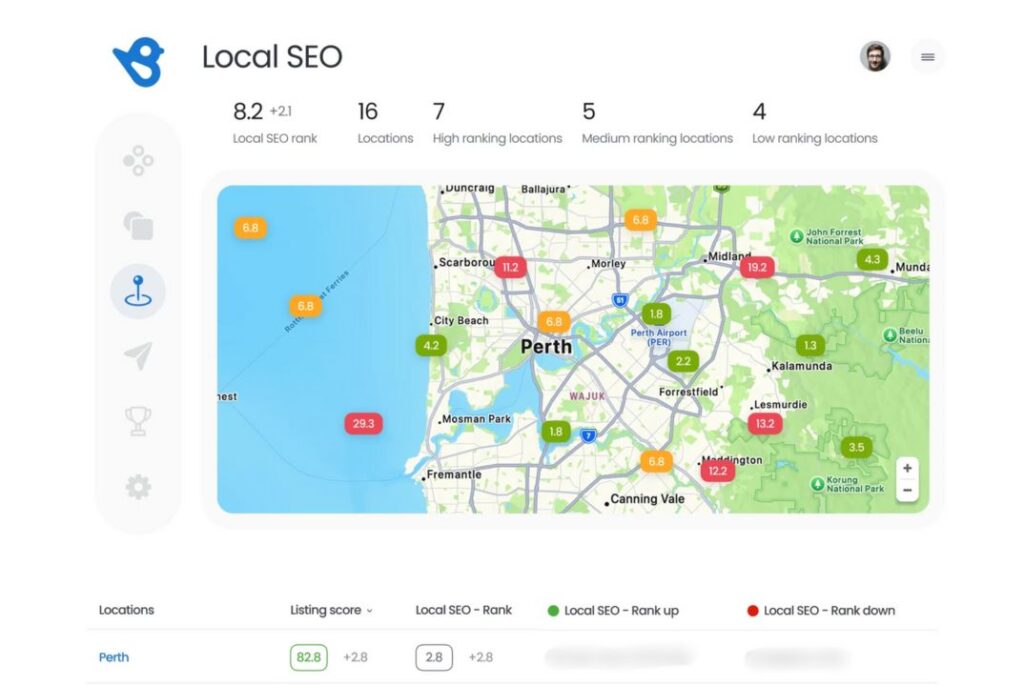
When prospective clients are in crisis and actively seeking legal assistance, they often search for immediate, nearby help using queries like “best injury lawyer in Chicago” or “car accident attorney near me.” If your firm doesn’t appear in the Google Maps local pack or in localized search results, you’re likely invisible to your most qualified leads.
Why local SEO matters for personal injury firms
- Location-based searches are high-intent. People looking for an “injury lawyer + city name” are closer to hiring than someone doing general research.
- The Google local pack’s top 3 map-based results are premium ones. Securing a spot there means more calls, more clicks, and more signed cases.
- Local SEO helps your firm stand out in saturated markets, especially when combined with informative content and strong online reviews.
Essential local SEO strategies to boost visibility and attract high-intent clients
Local SEO is your front line for attracting qualified leads in your area. With most clients searching for legal help near them, showing up in Google’s local pack and map listings can be the difference between a new signed case and a missed opportunity.
Here are the core local SEO strategies every competitive firm should be executing:
1. Optimize your Google Business Profile (GBP)
Your Google Business Profile is often the first impression a client gets before they even visit your website. A complete and well-managed GBP is one of the most critical ranking factors in local SEO. Make sure to:
- Include consistent NAP (Name, Address, Phone) data across all locations
- Clearly define your legal practice areas (e.g., car accidents, slip and fall, medical malpractice)
- Keep business hours current
- Add rich content like photos, service attributes, and timely updates
- Incorporate keyword optimization in your business description to target relevant local queries
Pro Tip: Use Birdeye Listings AI to audit and fix inconsistent or missing NAP details across 50+ directories, ensuring accuracy and strengthening your local SEO signals. Plus, with Birdeye's location-level dashboard, you can instantly identify missing fields and optimize your GBP listings for every office.
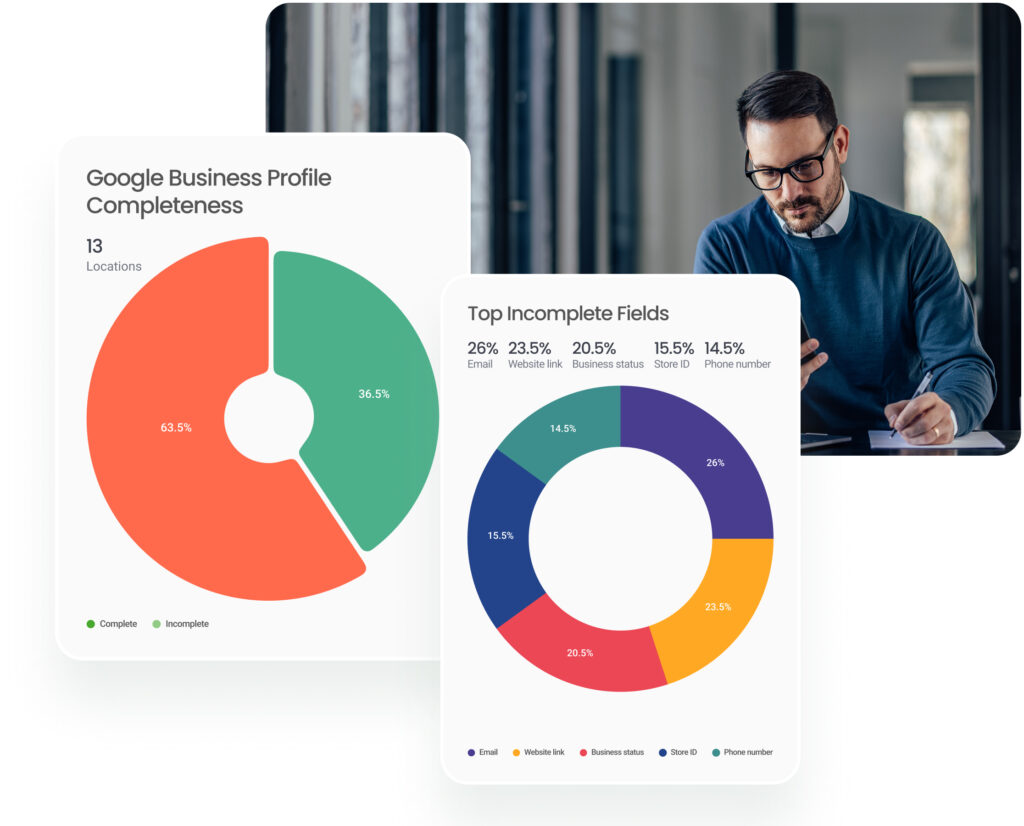
2. List your firm in high-authority directories
Local search is also shaped by how widely your firm is cited across trusted platforms. Listing your law firm consistently in the right places signals legitimacy to both search engines and potential clients. Reinforce your presence across the web by creating or updating business (law firm) listings on:
- Legal directories like Avvo, Justia, FindLaw, and Super Lawyers
- General business directories like Yelp, BBB, and Yellow Pages
- Local chambers of commerce and bar associations
Maintain uniform NAP formatting everywhere to avoid confusing Google’s algorithms and protect your hard-earned rankings.
Bonus Insight: Birdeye makes it easy to manage your firm’s listings across all major directories from one dashboard saving time and preserving consistency across all platforms.
3. Generate and manage client reviews at scale
Online reviews are a top-ranking factor in local search and an even bigger influence on prospective clients. The key? Timing and consistency.
Request reviews right after case resolution, when client satisfaction is highest. Then respond to every review, positive or negative feedback, to show your firm’s professionalism and transparency.
According to Birdeye State of Online Reviews 2025, between 2023 and 2024, review requests increased by 25%, while the average number of reminders sent per client rose by 9%, a clear signal that review management is accelerating in importance
Prominently displaying reviews on your site and in your Google Business Profile not only improves visibility but also builds trust with prospective clients.
With Birdeye Reviews AI, your firm can automate review requests, monitor feedback across multiple locations, and ensure your best testimonials are showcased on your website and GBP, boosting both local trust and conversion rates.
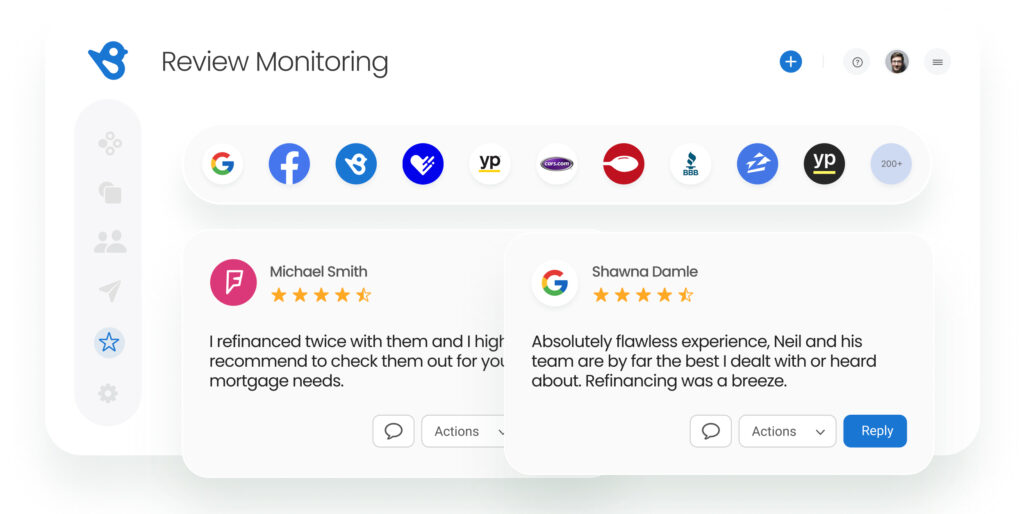
Alt text: Easily monitor and respond to feedback with Birdeye Reviews AI
4. Run a strategic local competitor analysis
If you want to lead in your local market, you need to know who you’re up against and where they’re gaining an edge.
Conduct a local competitor analysis to find out:
- What local keywords they’re ranking for?
- How are their Google Business Profiles structured?
- Where they’re earning backlinks and reviews?
- How frequently do they publish legal content or updates?
Pro Tip: Use Birdeye Competitors AI to instantly identify and monitor top competitors by location and practice area. This eliminates the guesswork and gives your firm data-driven insights to improve positioning.
A well-executed local SEO plan ensures your firm stays front and center when people search with urgency. Combined with broader law firm SEO efforts, such as content creation and on-site optimization, it becomes a cornerstone for growth, especially for multi-location firms or those expanding into new markets.
Building high-quality backlinks for personal injury lawyers: Earn authority, boost rankings, and win trust
One of the most influential components of a successful SEO strategy, particularly for personal injury lawyers, is building a strong, trustworthy backlink profile. While keyword optimization and on-site enhancements improve your content’s relevance, high-quality backlinks elevate your authority in search engines’ eyes.
What are backlinks, and why do they matter?
Backlinks are links from external websites that point to pages on your law firm’s website. Search engines treat these as endorsements, especially when they come from trusted, relevant sources like legal publications, news organizations, or community sites.
For prospective clients, these backlinks also serve as social proof. If your firm is mentioned or quoted by respected sources, it builds your perceived credibility and can encourage users to click through and contact you.
Visibility that brings in verdicts.
Want to see the impact of Birdeye on your business? Watch the Free Demo Now.
How to get authoritative backlinks as a personal injury lawyer
Not all backlinks are created equal. The goal is to earn links from relevant, high-authority domain sites that are trusted by both Google and your target audience.
Here are proven tactics to build powerful backlinks:
1. Write guest articles for legal publications and high-authority blogs
Pitch insightful, original content to legal journals, bar association blogs, or national legal platforms. Articles such as “What every driver needs to know after a car accident in [City]” or “Understanding Slip and Fall Liability” not only demonstrate thought leadership but also include backlinks that boost your domain authority.
2. Get featured in local media, podcasts, and events
Offer legal commentary for local news stories or participate in community podcasts that cover legal topics. These platforms often include backlinks to your site in show notes or article bios, which help you reach both prospective clients and search algorithms.
3. Partner with local organizations or charities
Sponsoring a charity run or giving legal workshops for local nonprofits often earns your firm a mention (and link) on their websites. This type of local backlinking strengthens your firm’s geographic relevance, which is especially beneficial for Google Business Profile optimization and local SEO impact.
4. Conduct strategic competitor analysis
Use tools like Ahrefs, Moz, or SEMrush to uncover where other top-ranking personal injury law firms are getting their backlinks. This competitor analysis reveals:
- Which directories, blogs, or media outlets they’re featured in
- How often they’re publishing and linking to content
- What type of topics or formats are earning them the most attention
Reverse-engineer their strategy and look for gaps and opportunities they’ve missed, but your firm can claim.
Pro tip: Backlink opportunities often correlate with content performance. Use your competitor analysis to refine not only where you’re earning links but what type of content deserves promotion and outreach.
For personal injury lawyers aiming to expand their digital footprint, each earned backlink is a vote of confidence, one that improves rankings, attracts more prospective clients and reinforces your authority in a highly competitive field.
Therefore, when paired with strong on-page SEO, keyword optimization, and Google Business Profile optimization, your backlink profile becomes a significant growth engine for your firm’s online success.
Effective content marketing strategies for personal injury lawyers: Educate, engage, and earn trust
No SEO strategy is complete without a powerful content marketing engine behind it. For personal injury lawyers, content is more than a tool for visibility. It’s a way to build trust, educate clients, and establish authority in a highly competitive space. When someone is navigating a traumatic event like a car accident or medical negligence, they’re searching for immediate answers, and your content must deliver them.
Why content marketing is vital for SEO success
Search engines reward websites that offer relevant, high-quality content tailored to user intent. For personal injury law firms, this means answering the exact questions your prospective clients are asking during their decision-making journey. Great content not only improves your presence in local searches but also keeps visitors engaged and more likely to convert.
Key content marketing strategies that drive results
1. Focus on informative, client-centered content
Use your blog, service pages, and resources to answer real-world questions, such as:
- “What is the statute of limitations for car accidents in [City]?”
- “What compensation can I claim after a slip and fall injury?”
- “How do I choose the right personal injury lawyer?”
These types of articles capture search traffic and position your firm as a knowledgeable, approachable authority.
2. Build content clusters around key practice areas
Organize your site around topic clusters that cover every angle of a specific injury type. For example:
- Car accidents: liability, insurance claims, rear-end collisions, distracted driving
- Slip and fall: premises liability, commercial vs. residential cases, injury documentation
- Medical malpractice: surgical errors, misdiagnosis, birth injuries
This structure improves internal linking, boosts dwell time, and reinforces your authority for local SEO tactics and Google’s E-E-A-T criteria (Experience, Expertise, Authority, and Trustworthiness).
3. Use keyword research tools to uncover high-value opportunities
Don’t guess; use tools like Ahrefs, Semrush, and Google Keyword Planner to identify what your audience is searching for. These keyword research tools help uncover long-tail phrases, trending legal questions, and gaps in your current content strategy.
With a smart SEO strategy backed by data, you’ll increase your chances of ranking for precise, high-intent search queries, likely those tied to local searches.
4. Analyze content performance with Birdeye Insights AI
Platforms like Birdeye’s Insights AI take your strategy further by analyzing client reviews, feedback, and sentiment data to identify top-performing themes and content gaps. This real-time intelligence allows your firm to create content that’s not only SEO-friendly but also emotionally resonant and conversion-driven.
Review management: A hidden SEO powerhouse
In addition to content, one of the most undervalued aspects of SEO is review management. Reviews directly influence:
- Your search engine rankings.
- Click-through rates from local searches.
- Trust and conversion rates once a potential client lands on your page.
How to leverage reviews for SEO and conversion:
- Ask for reviews at key moments—after a case settles or a consultation concludes. Timing matters.
- Encourage reviews on Google, Facebook, and top legal directories like Avvo and Justia.
- Use Birdeye’s Review AI to automate the process, send reminders, and track results.
According to the Birdeye State of Online Reviews 2025, a staggering 80% of all legal firm reviews now appear on Google, cementing its position as the top platform for building trust. Even more, the total volume of legal reviews has surged by 13%, signaling that clients are speaking up more than ever, and firms can no longer afford to ignore their online reputation.

Showcase client satisfaction across digital touchpoints:
Don’t let great feedback sit idle. Display your best reviews:
- On your homepage and service pages
- In blog content, as client testimonials
- On your Google Business Profile to support local SEO tactics
These reviews act as social proof that reinforces the messaging in your content and can be the final nudge a hesitant client needs to reach out.
Content and reviews are the dual engines of trust in digital spaces. Together, they not only help you rank better in local searches but also convert more site visitors into loyal clients.
Tracking and measuring your SEO efforts: Turn data into direction
The true power of search engine optimization lies not only in implementation but in consistent, strategic measurement. For personal injury law firms, understanding what’s working (and what’s not) is what separates stagnant sites from scalable growth machines. Without real-time tracking, even the most well-crafted digital marketing strategy can drift off course.
A high-performing law firm’s website must evolve based on data. To do that, firms need to monitor key performance indicators tied to visibility, engagement, and conversions.
Core SEO metrics that demand your attention
- Keyword rankings: Are you aiming for competitive, high-intent terms like “personal injury attorney near me” or “car accident law firm in [City]”?
- Organic traffic trends: Measure changes in website traffic from non-paid sources. Increases here show that your SEO for personal injury lawyer content is being indexed and surfaced effectively.
- Click-through rate (CTR): High impressions with low CTR? That’s a signal to improve your metadata—titles, URLs, and descriptions.
- Conversion rates from SEO traffic: More traffic is great, but how many visitors are turning into leads or signed cases? This figure reflects how aligned your law firm’s website is with user intent.
- Site speed: Search engines prioritize fast-loading websites. Delays not only hurt rankings but also increase bounce rates and reduce user trust.
Tools to streamline SEO tracking
- Google Search Console: Essential for monitoring your visibility in search, indexing status, and keyword performance.
- Google Analytics: Tracks user behavior, engagement, and conversion paths to help you refine content and navigation.
- Birdeye Dashboards: Especially useful for personal injury law firms, Birdeye’s solution offers GenAI insights into traffic patterns, review performance, and customer sentiment, allowing you to make smarter, faster decisions.
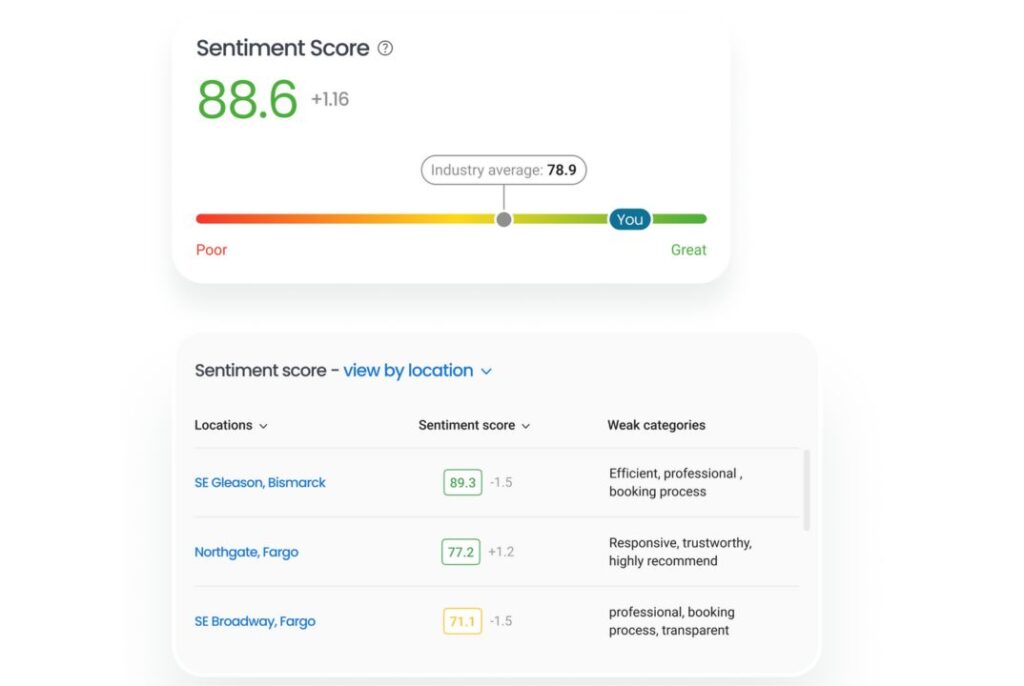
Should you manage SEO in-house or hire an agency?
For many personal injury law firms, the real challenge is finding the time, expertise, and consistency to manage it effectively. Building authority and improving search rankings requires ongoing work across content development, site speed optimization, technical audits, keyword optimization, and reputation management.
Here’s when bringing in professional help makes sense:
- You struggle to regularly create or update content aligned with personal injury law trends and search demand.
- You’ve invested in SEO but aren’t seeing meaningful growth in website traffic or conversion rates.
- Your firm operates in multiple cities and needs to scale local SEO efforts and Google Ads campaigns across locations.
- You lack the internal resources to track performance, run technical audits, or analyze complex reports.
By partnering with agencies that specialize in SEO services for personal injury lawyer practices, your firm gains access to experienced strategists who understand the nuances of legal marketing.
This includes compliance guidelines, bar association standards, and what resonates with personal injury clients online.
The best agencies will offer more than tactics; they’ll help you translate your brand into a high-performing digital presence that earns trust and drives results.
For any law firm, measuring its SEO efforts and knowing when to scale with expert help can transform its online footprint into its most valuable growth asset.
FAQs: SEO for personal injury lawyer
It involves optimizing your personal injury attorney website for search engines so that your law firm appears in the top search results when clients look for legal help.
Most law firm SEO campaigns take 3–6 months to see measurable impact in search engine rankings and lead flow.
Use a mix of personal injury keywords like “injury lawyer near me,” “car accident attorney,” and “best personal injury lawyer in [city].”
SEO for personal injury lawyer marketing is hyper-local, time-sensitive, and competitive. Potential clients often search immediately after an accident, so your website needs to rank fast, show trust signals, and provide clear answers. Unlike general SEO, it’s about capturing people in moments of urgency.
Yes. SEO for personal injury lawyer websites targets keywords that people use when they’re ready to hire, like “car accident lawyer near me” or “truck accident attorney in [city].” When done right, SEO brings in serious, case-ready leads that convert into revenue without the high cost of ads.
Final thoughts: Time to dominate page one of Google
For personal injury law firms, appearing on the first page of Google is more than a win-win situation. It’s where critical client decisions are made. Every click, call, and signed case starts with visibility. And visibility begins with a robust, data-driven SEO strategy that strengthens every part of your online presence.
From technical SEO and link building to local SEO strategies and ongoing content development, the most competitive law firms treat SEO as a core business function, not an add-on. Your law firm’s website must not only rank well, but it must earn trust, provide answers, and convert visitors into qualified leads.
Platforms like Birdeye make this process more streamlined and scalable. Whether you’re practicing solo as a personal injury attorney or running a multi-location firm, Birdeye helps you:
- Generate and showcase authentic client reviews across Google, legal directories, and social platforms.
- Enhance Google Business Profile performance for maximum local visibility.
- Gain a strategic edge through real-time competitor analysis and keyword insights.
- Track and improve the performance of your SEO initiatives at every level.
With the right technology and approach, your firm can claim more digital territory, attract higher-quality leads, and deliver a client experience that reflects the credibility and compassion at the heart of your legal practice.
Do you need help implementing this strategy? Birdeye empowers personal injury law firms to elevate their search rankings, manage their legal online reputations, and increase client acquisition efforts all from a single platform.
Watch a demo today.

Originally published




